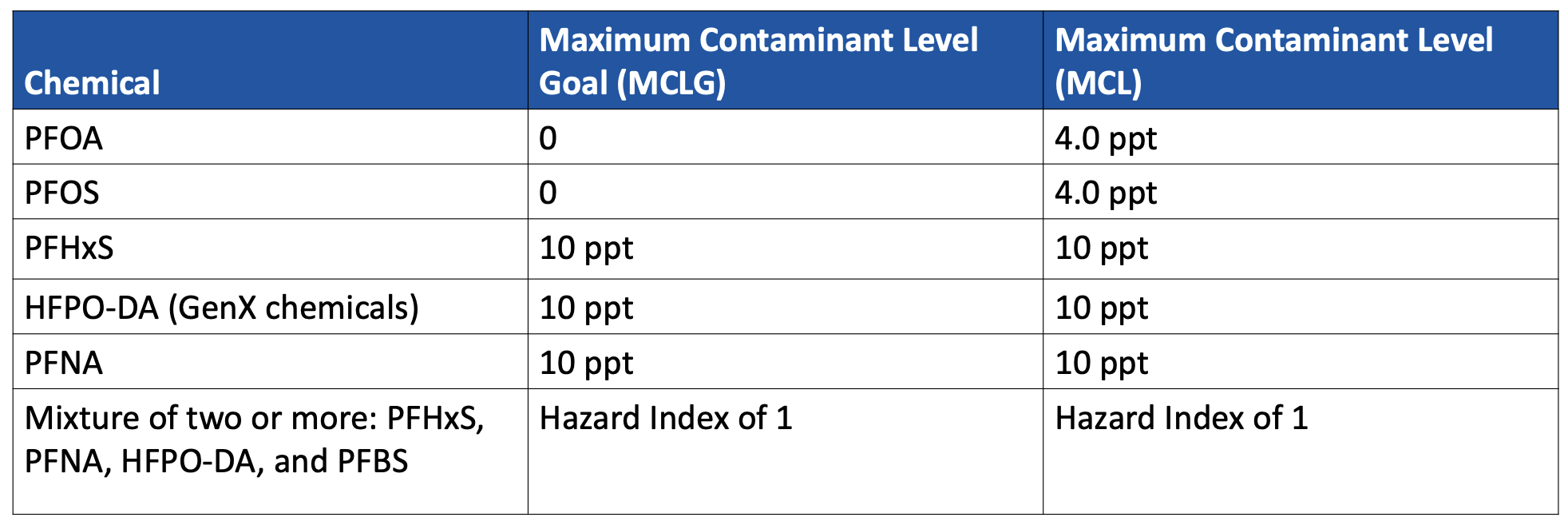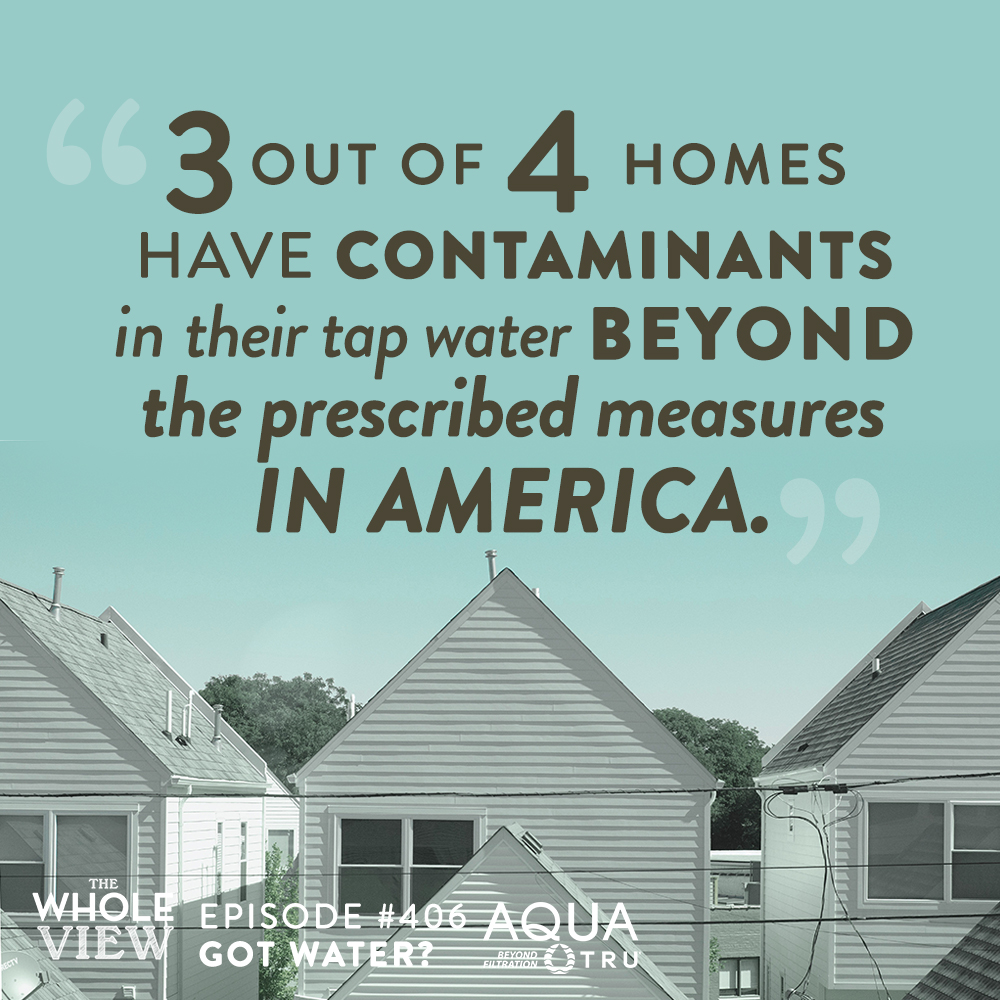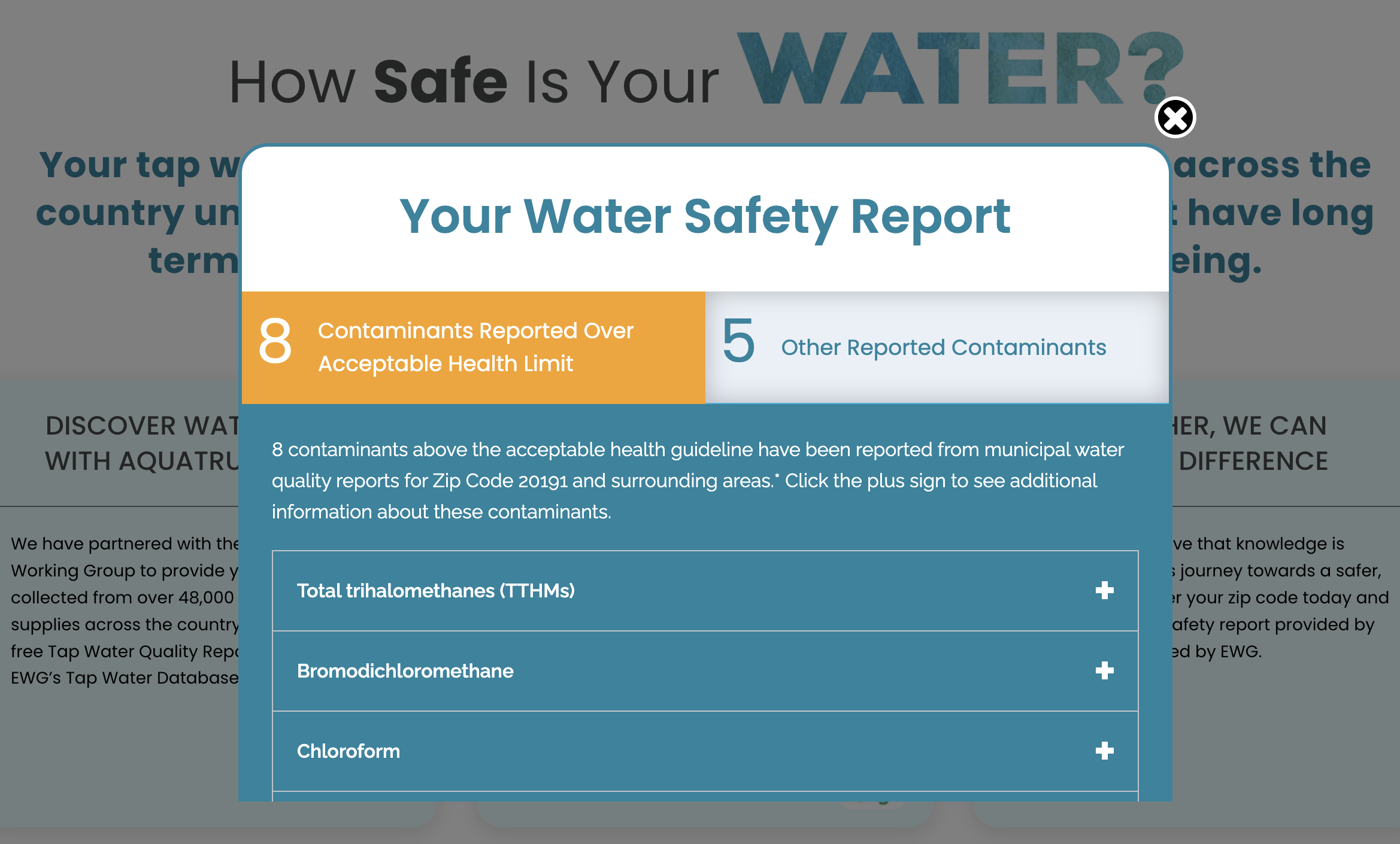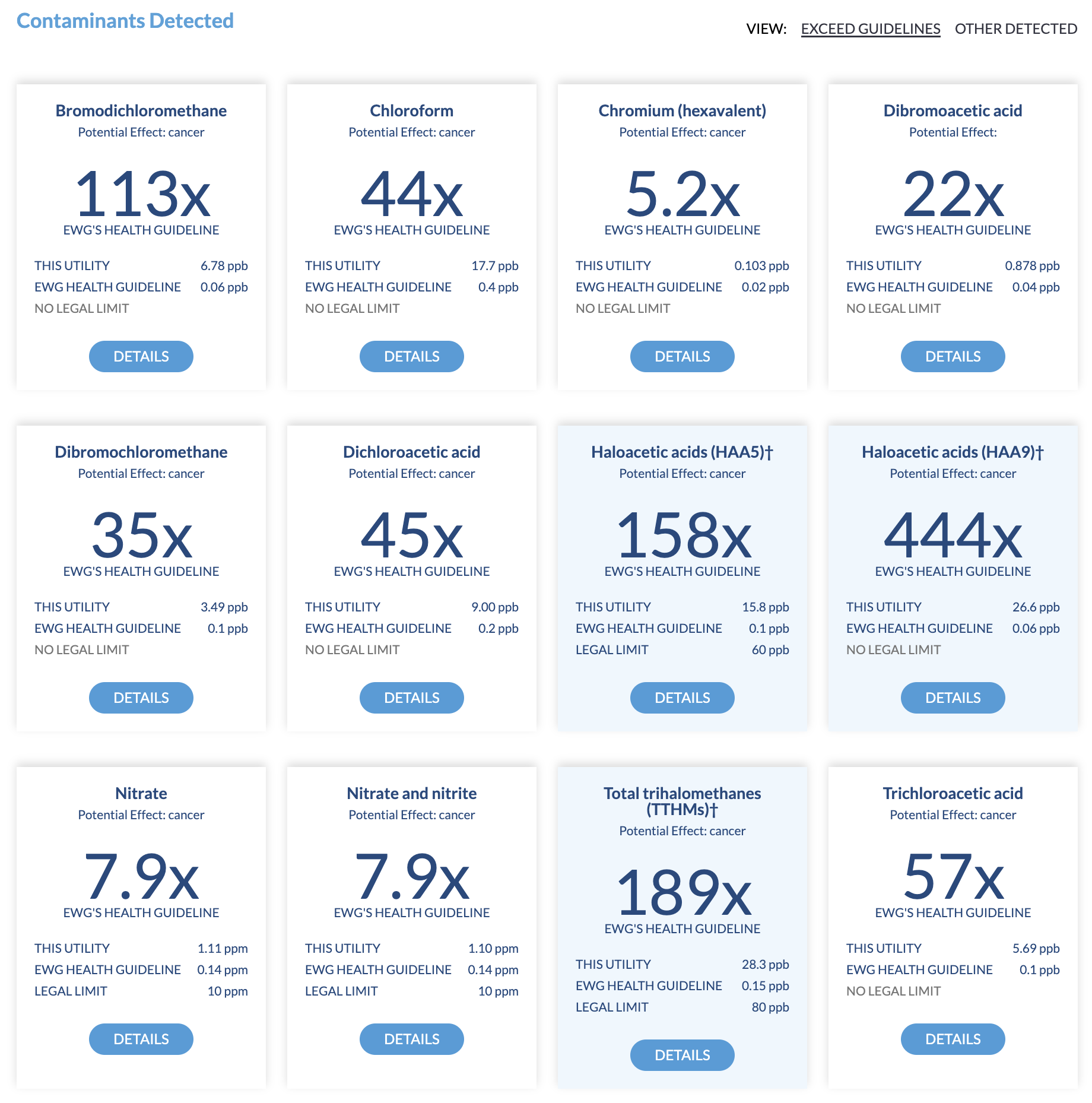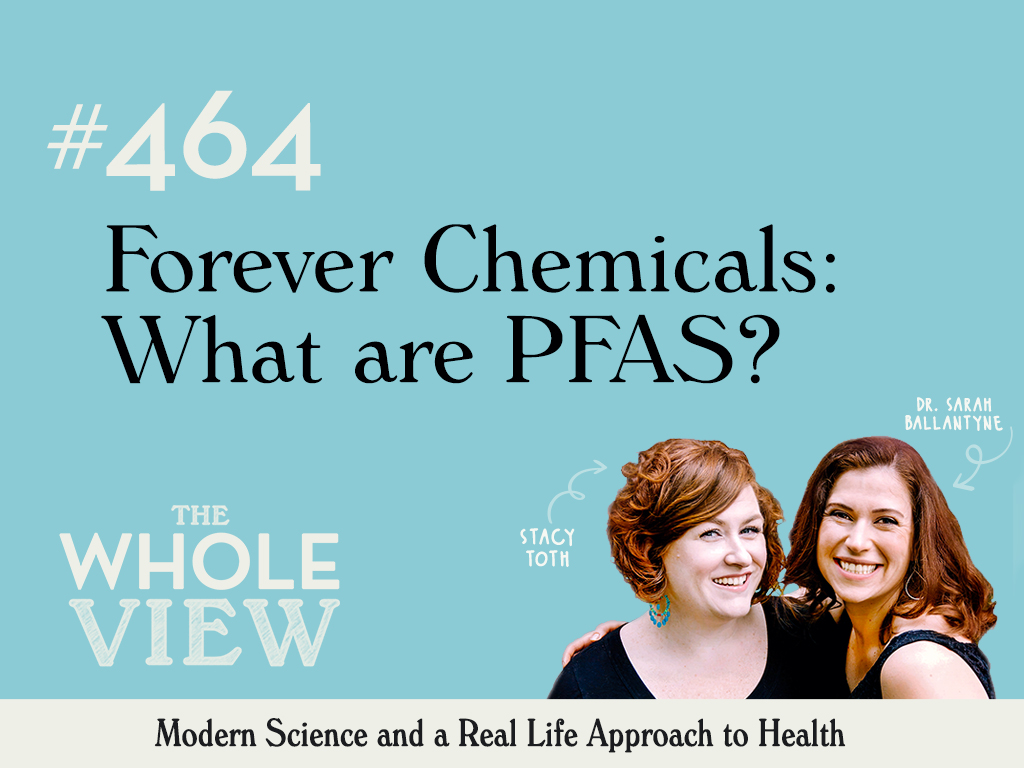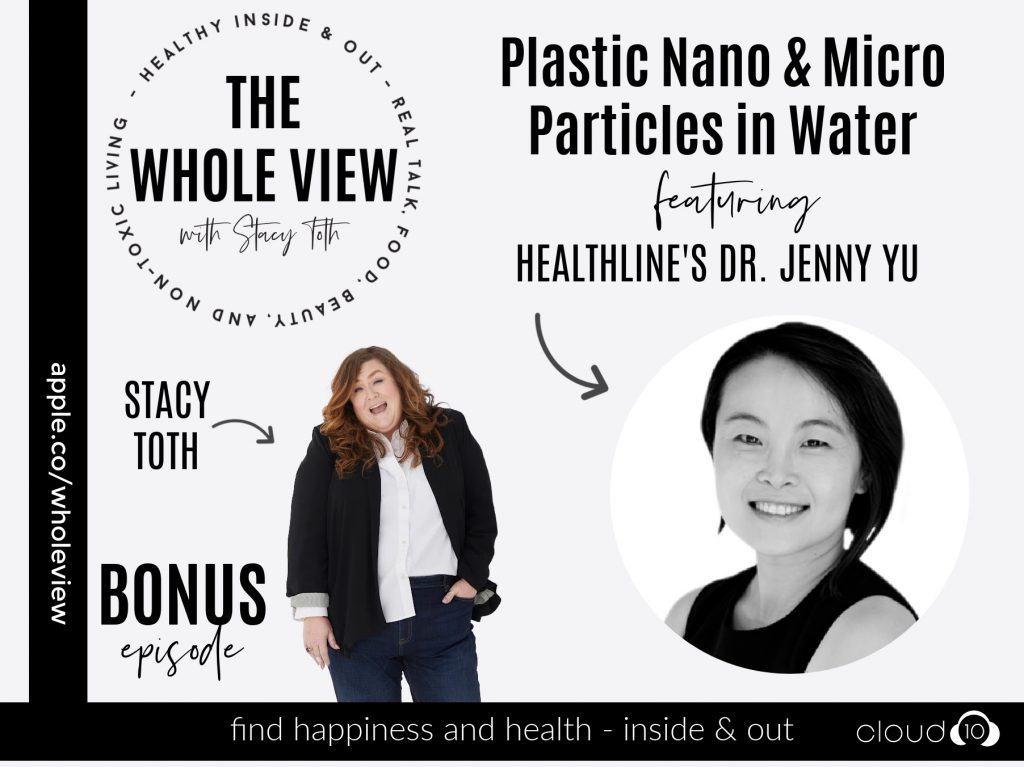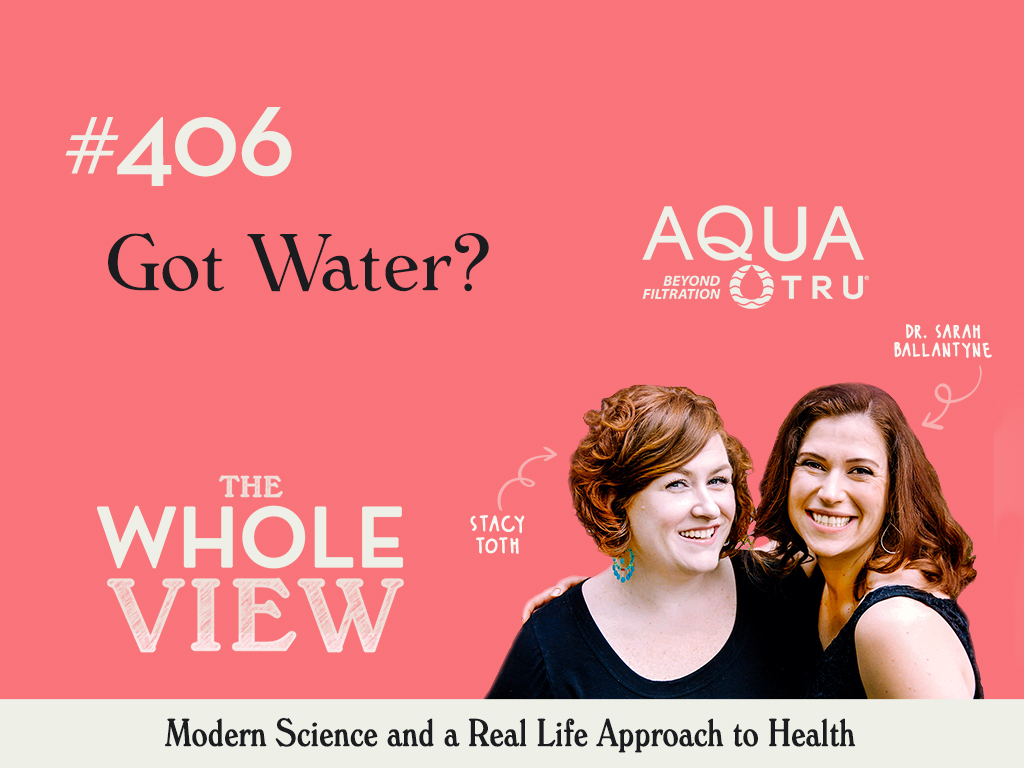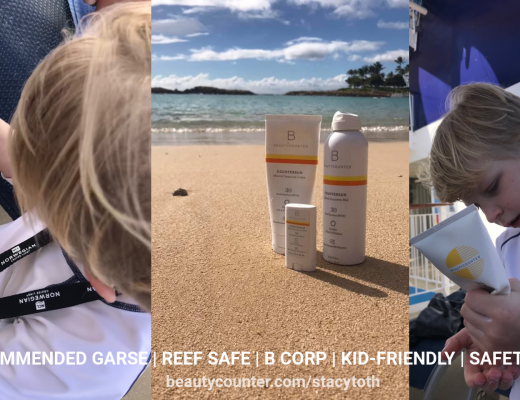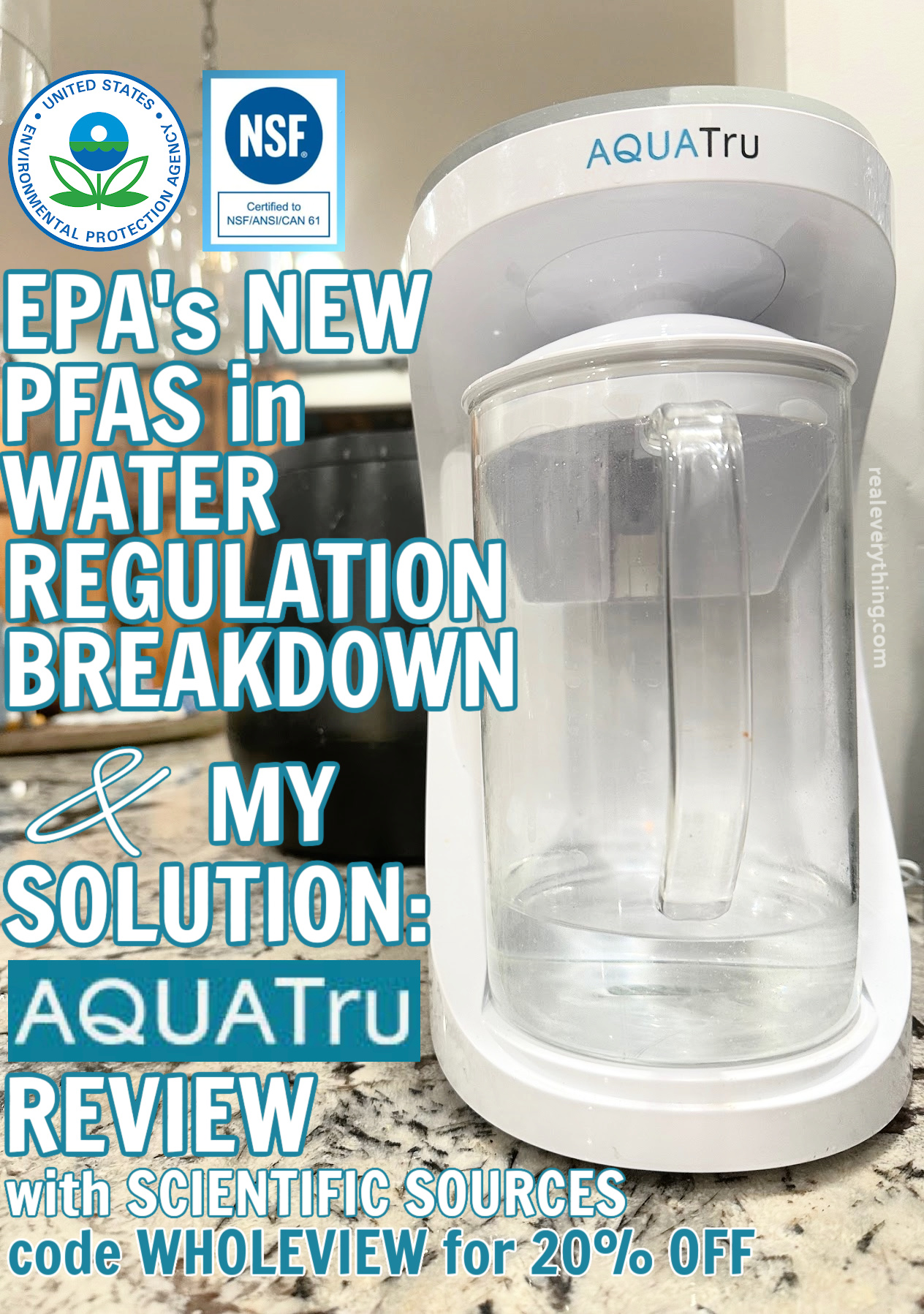
The Environmental Protection Agency finalized unprecedented new limits to tackle drinking water contamination from six of the notorious “forever chemicals” known as PFAS – PFOA, PFOS, GenX, PFBS, PFNA and PFHxS. While this is great news, it means that we have been drinking contaminated water and will continue to do so until remediation is made at a Federal level. Until then, at-home water purification using a system like AquaTru to remove PFAS is our best option.
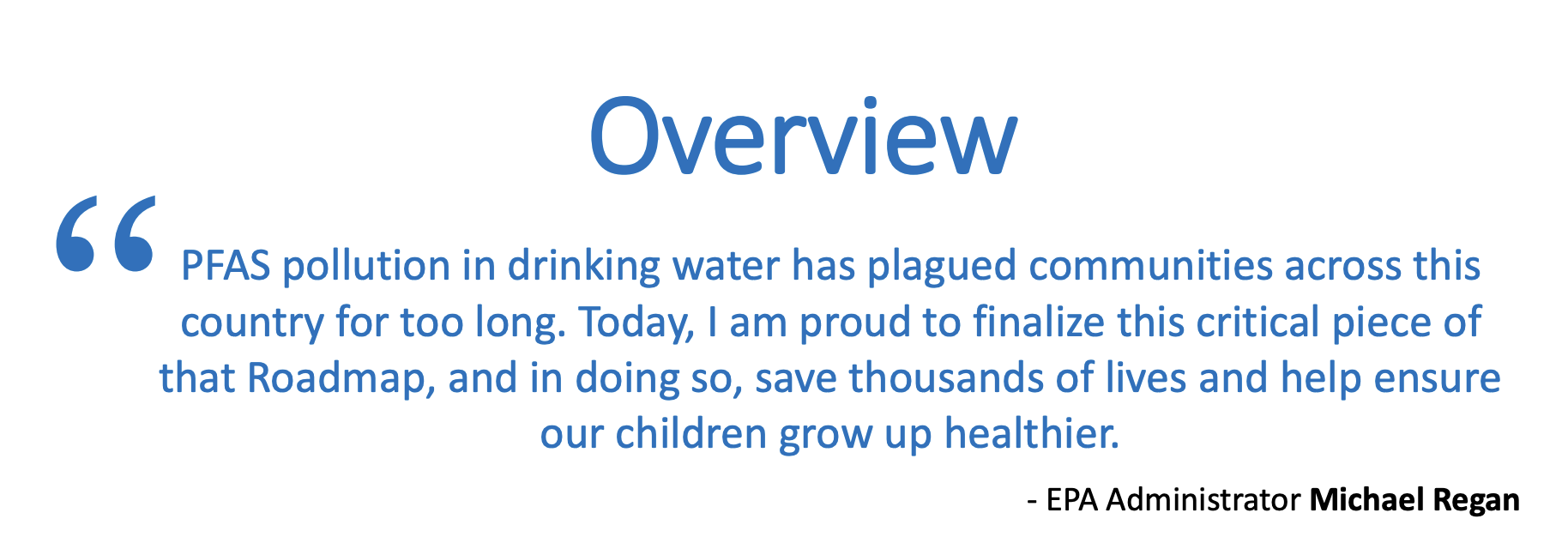
EPA’s New PFAS Limits
EPA’s new limits, known as maximum contaminant levels (MCLs) are the highest level of contaminant allowed in drinking water. The new MCL requires water treatment plants to lower the amount of these chemicals in current water systems, based on human health and environmental safety.
The six specified PFAS are part of a larger family of toxic fluorinated chemicals that build up don’t break down in the body or environment. Even at low levels, they have been linked to cancer, reproductive harm, immune system damage and other serious health problems. (1)
According to the EPA, The final rule will reduce PFAS exposure for approximately 100 million people, prevent thousands of deaths, and reduce tens of thousands of serious illnesses.” (2) In the first-ever national drinking water standard for per- and polyfluoroalkyl substances (PFAS), EPA expressed the following key messages:
- PFAS exposure over a long period of time can cause cancer and other illnesses that decrease quality of life or result in death.
- PFAS exposure during critical life stages such as pregnancy or early childhood can also result in adverse health impacts.
- EPA is issuing this rule after reviewing extensive research and science on how PFAS affects public health, while engaging with the water sector and with state regulators to ensure effective implementation.
- PFAS pollution can have disproportionate impacts on small, disadvantaged, and rural communities already facing environmental contamination.
- The quantifiable health benefits of this rule are estimated to be $1.5 billion annually (based on quantified by considering the costs of illness such as lost wages, medical bills, and the value of every life lost).
- EPA estimates that between about 6% and 10% of the 66,000 public drinking water systems subject to this rule may have to take action to reduce PFAS to meet these new standards. (2)
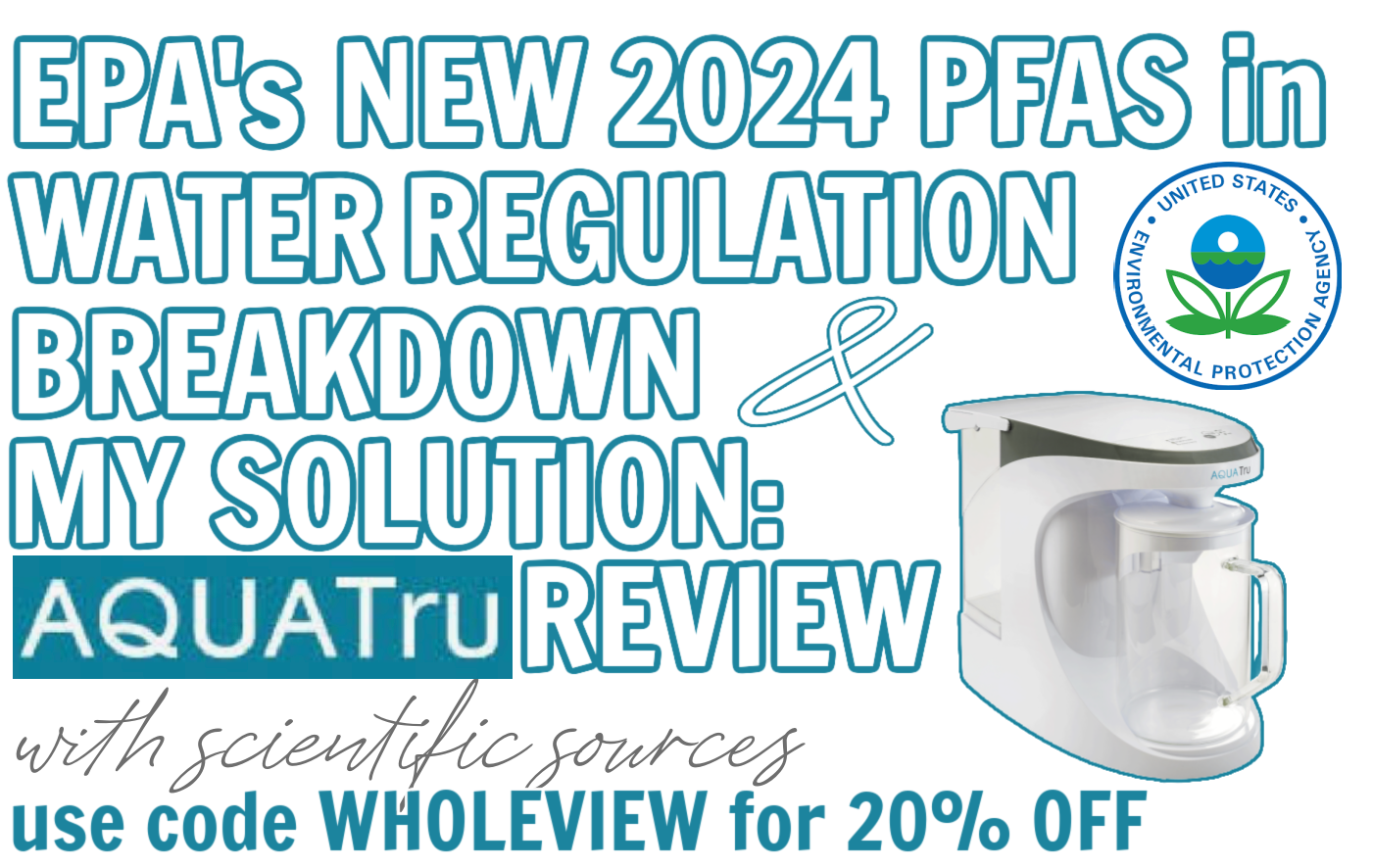
New Regulatory Levels
For PFOA and PFOS,
- a non-enforceable health-based goal of zero. This is called a Maximum Contaminant Level Goal (MCLG). This reflects the latest science showing that there is no level of exposure to these two PFAS without risk of health impacts.
- EPA is setting enforceable MCLs at 4.0 parts per trillion for PFOA and PFOS, individually.
Other PFAS
- For PFNA, PFHxS, and HFPO-DA (GenX Chemicals), EPA is setting MCLGs of 10 parts per trillion.
- EPA is also regulating, through a hazard index (HI), mixtures of four PFAS—PFHxS, PFNA, HFPO-DA, and PFBS
Decades of research show some chemicals, including some PFAS, can combine in mixtures and have additive health effects, even if the individual chemicals are each present at lower levels. (2)
Implementation: Timeframes for Change
The EPA has outlined a plan, including timeline and estimated cost as well as funding for implementation:
- Within three years of rule promulgation (2024 – 2027):
- Initial monitoring must be complete.
- Starting three years following rule promulgation (2027 – 2029):
- Results of initial monitoring must be included in Consumer Confidence Reports (i.e., Annual Water Quality Report)
- Regular monitoring for compliance must begin, and results of compliance monitoring must be included in Consumer Confidence Reports
- Public notification for monitoring and testing violations
- Starting five years following rule promulgation (starting 2029)
- Comply with all MCLs
- Public notification for MCL violations
- EPA’s final rule does not dictate how water systems remove these contaminants. The rule is flexible, allowing systems to determine the best solutions for their community.
- Drinking water utilities can choose from multiple proven treatment options.
- Water treatment technologies exist to remove PFAS chemicals from drinking water, including granular activated carbon, reverse osmosis, and ion exchange systems.
EPA provides funding through a bi-partisan infrastructure law (BIL).
It collaborates with state, Tribes, territories, community partners, and other key stakeholders to implement Water Technical Assistance (WaterTA) efforts and the end result is more communities with applications for federal funding, quality water infrastructure, and reliable water services. EPA’s water technical assistance program is ensuring that disadvantaged communities can access federal funding.
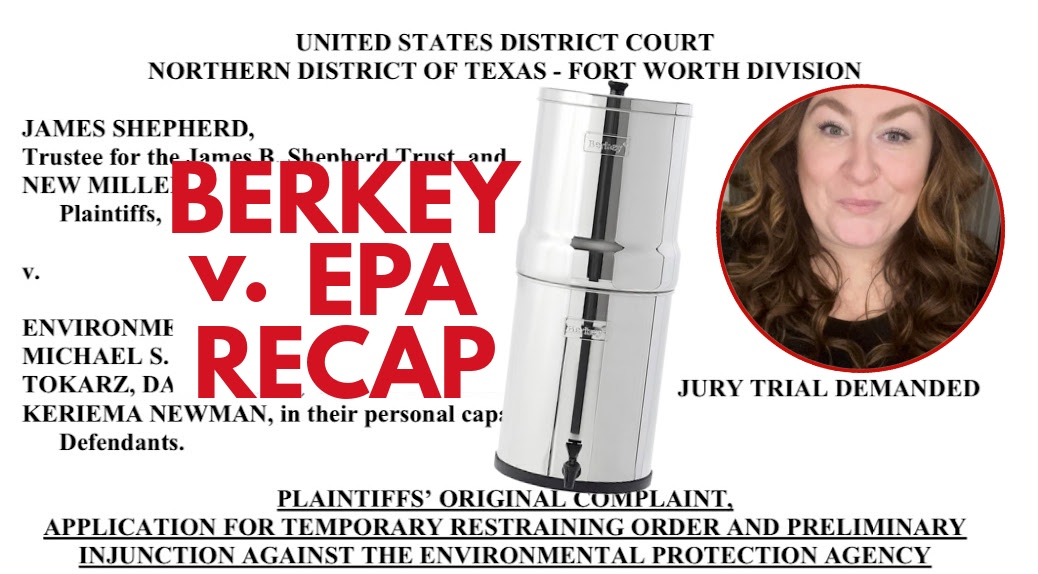
How Regulation Benefits You
Not only does the EPA have sovereignty over the States’ water supply, but they also provide standards for at-home filters. While we consume MANY things containing water made with a public supply, at home consumption is what we have the most control over. I recently did a deep-dive into the filing by Berkey from the EPA’s stop-sale on it’s water filter.
Absolutely, the EPA changing the standards is the best solution for fixing the problem for all. Not everyone has access to fancy filters. But if we are going to pay for a water filter, we expect it to meet the claims it’s making. In the case of Berkey, the brand’s claims were unable to be replicated and meet basic NSF/ANDI standards. You can read more here.
What are NSF/ANSI standards?
Fun fact: I once worked in a building that shared space with the National Science Foundation (NSF). Among many things this trusted non-governmental body creates are standards in residential water treatment systems. Their mission is to align public health with corporate social responsibility. The NSF is the authority for many health standards, testing, certification, water, health products, and the environment. Essentially, they’re a non-profit that’s looking out for you.
No federal regulations exist for residential water treatment filters, purifiers and reverse osmosis systems. So NSF experts developed voluntary standards and protocols to establish minimum safety and performance requirements for drinking water, food and other consumer products. They also do in-house testing and certification. However, once these standards are created by NSF, a select group of five organizations are accredited by ANSI (American National Standards Institute) and allowed to independently test and certify products to NSF standards. ANSI oversees standards and conformity assessment activities in the United States. (7)
What I Recommend
If you already have a Berkey, you can switch to a ceramic version that is NSF certified, like these.
As is AquaTru which I recommend. You can search “NSF certified” on many sites online.
It’s important to know what you are at-risk of, check your local water sources. My county discloses it’s annual water testing results, so that you can make informed choices about any violations. You can look yours up here.
Mine has 8 contaminants over the acceptable health limit:
Remember Hexavalent Chromium, it was chemical causing the negative health effects in Erin Brokovich and my county’s is over 5x EWG’s guideline. Shocking to see there is no legal limit for it! EWG also identified 3 other cancer-causing chemicals with VERY high exponentials.
If you don’t already have a high-end unit and are looking for which one to invest in, I (and the EPA) recommend a reverse osmosis system. I discussed why on my podcast, The Whole View ep 406.
I personally use AquaTru
If for no other reason than it’s endorsed by Erin Brokovich. And is “an affordable reverse osmosis water purification system that finally and effectively brings pure, great tasting drinking water to everyone.”

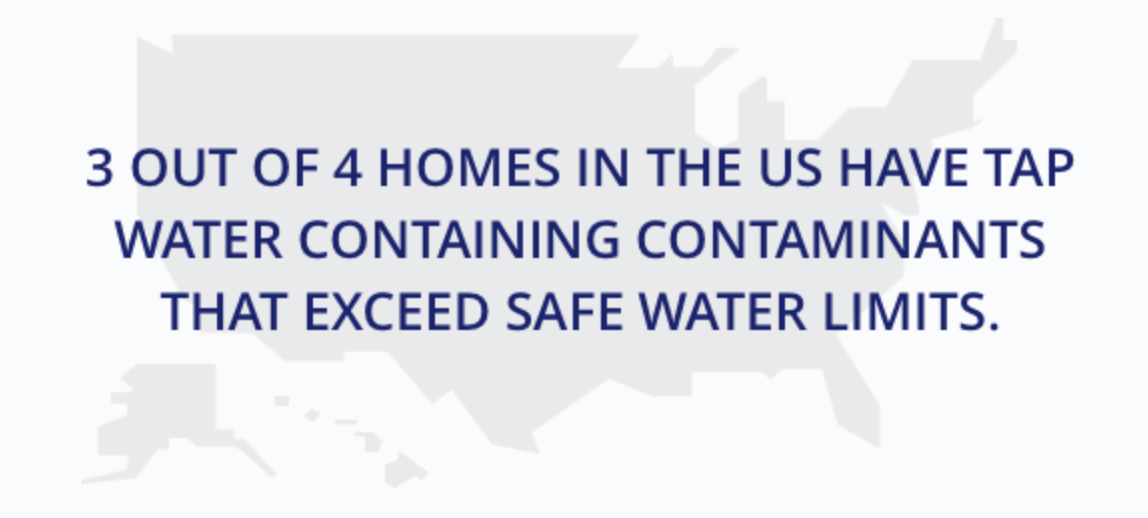
We have used AquaTru since 2020 when we first tried their at-home countertop reverse osmosis water filtration system. AquaTru purifiers use a 4-stage reverse osmosis purification process, it removes 15x more contaminants than ordinary pitcher filters and are specifically designed to combat chemicals like PFAS in your water supply, which are found in about half of US tap water.
Because it’s portable, I actually lent my original unit to my mom, who lives in an area whose municipal water source was contaminated with a class of PFAS discharged by a company who was sued for dumping into the local water supply. It’s a story a lot like the movie Dark Waters, and I knew it was the only at-home device that could remove those forever chemicals.
AquaTru is one of the only companies that goes the extra mile to certify products to remove over 80 contaminants, including:
- ‘Forever chemicals’ (PFAS)
- Fluoride
- Chlorine
- Chloramines
- Lead
- Chromium 6
- Arsenic
- Nitrates
- Pesticides & Herbicides
Countertop Reverse Osmosis
As was discussed on Ep 406 and the recent bonus episodes on the EPA vs Berkey water filter as well as the one with Dr. Jenny Yu about micro and nano plastic particles in our water; water purification is important. Science repeatedly shows RO as the best way to filter water.
AquaTru is in a category all its own as a countertop reverse osmosis system that uses a conservation technology about 12x more efficient than professionally installed under-the-sink RO systems. The new one I got as a replacement has a glass carafe (pictured above) that has made it easy for us to use and easily bring to the dinner table to fill up cups and fill up the bottles of sparkling water we like to make.
Matt specifically told me he likes this version better because of how easy the mechanism is for filling up the carafe. And we’ve been using the “waste water” on our houseplants so that nothing goes to waste.
The filters are affordable and long-lasting. No changing filters every 2-3 months. AquaTru filters last from 6 months to 2 years! And, AquaTru comes with a 30-day Money-Back Guarantee and even makes a great gift.
AquaTru Certification
You want to look for certification to NSF standards when shopping for water filtration products, but they can be certified by one of the following organizations: NSF International, IAPMO, WQA, UL, or CSA Group. “NSF certified” means it was specifically tested and certified by the organization NSF International, but certification to NSF standards by any of those five organizations all carry equal weight because they are all accredited and held to the same NSF standards, rigorous testing and auditing to keep consumers safe.
Note: Be wary of products that only claim that they have been internally tested, independently tested, or even “independently tested to NSF standards”, but are not certified to NSF standards. This means that they have not received certification by one of the 5 aforementioned labs that test, enforce and audit NSF standards.
AquaTru is one of the only companies that goes the extra mile to certify our products to remove over 80 contaminants. Many companies can claim high contaminant removal (over 200 contaminants), but do not have certification. AquaTru could actually make a higher contaminant removal claim based on their reverse osmosis technology and independent testing, but we choose to only make claims on the contaminants we are certified to remove to give our customers peace of mind that the contaminants we claim to remove will in fact be removed for the full life of the filters and are backed by certification from an ANSI-accredited laboratory.
Discount Code
I actually am not an affiliate nor was I paid to write this review. AquTru has partnered with me on the podcast, but because I genuinely love the product I wanted to share it more widely with you here.
You can get 20% OFF any AquaTru purifier at AquaTru.com with code “WHOLEVIEW”
Listen & Learn on The Whole View
- Episode 464: Forever Chemicals: What are PFAS? on The Whole View
- Bonus Episode with Healthline’s Dr. Jenny Yu on Plastic Nano & Micro Particles in Water on The Whole View with Stacy Toth
- Episode 406: Got Water? on The Whole View
Studies, References & Products
- EPA sets bold new limits on ‘forever chemicals’ in drinking water, EWG.org
- Final PFAS National Primary Drinking Water Regulation, EPA.gov
- Per- and Polyfluoroalkyl Substances, EPA.gov
- Rapid single-particle chemical imaging of nanoplastics by SRS microscopy, Proceedings of the National Academy of Sciences (PNAS)
- Bottled Water Is Full of Plastic Particles. Can They Harm Your Health?, NY Times
- Berkey Water Filters vs. the EPA, RealEverything.com
- Are You NSF Certified, AquaTru.com
Want more info on our Real Life? Healthy recipes, parenting tips, and general lifestyle stuff goes out in our Real Everything newsletter, join here.
So never want to miss a post, sale, or deal? Join my Healthy Inside & Out e-mail list for more info on non-toxic living and safer skincare!

